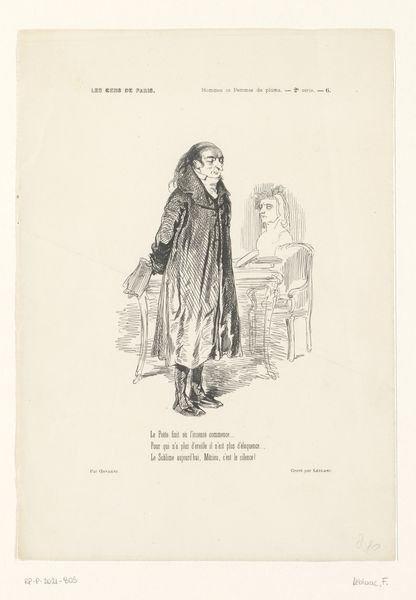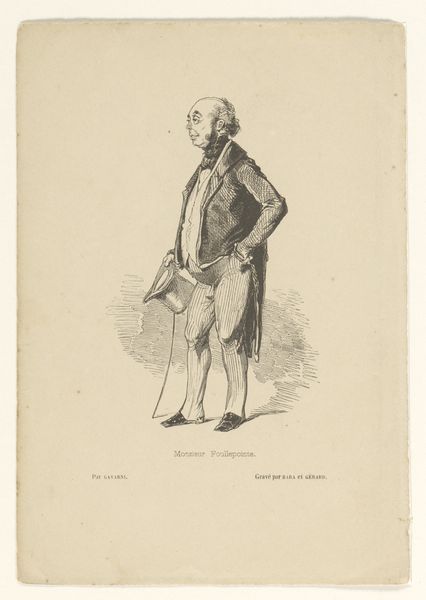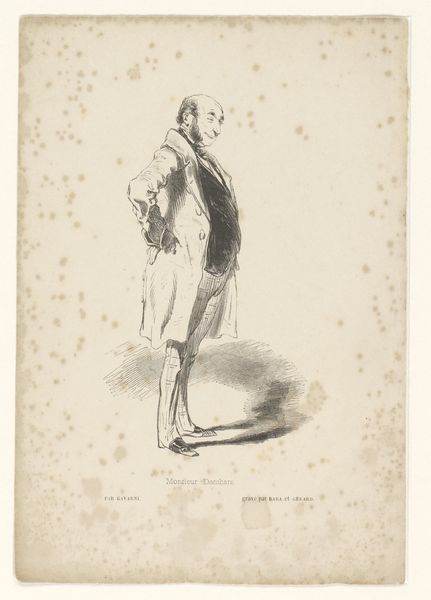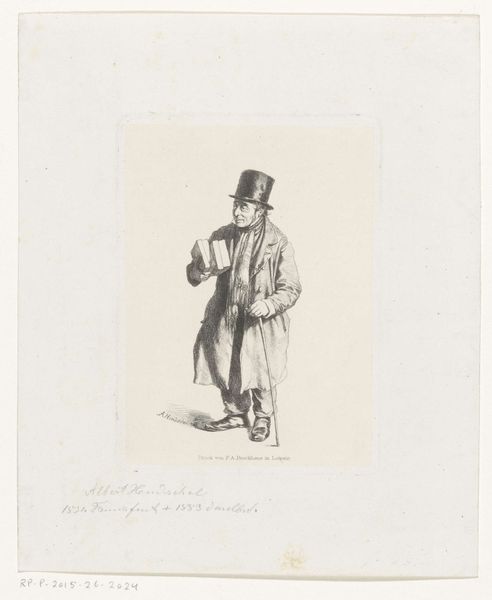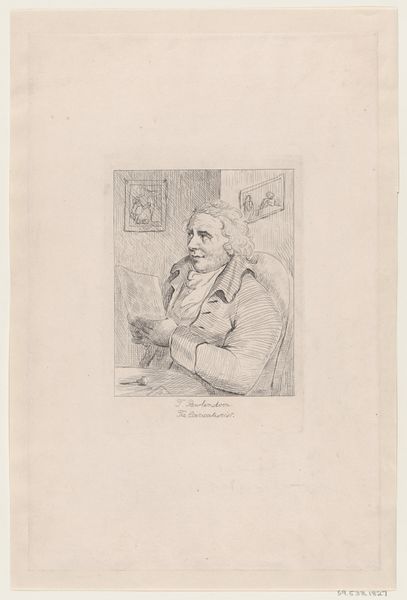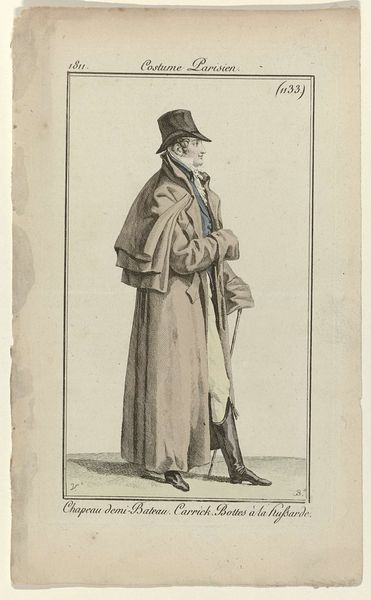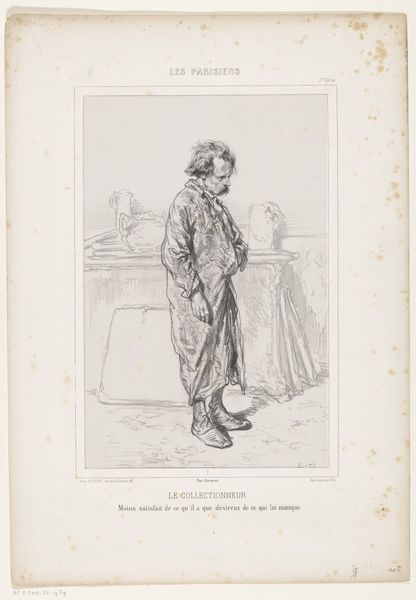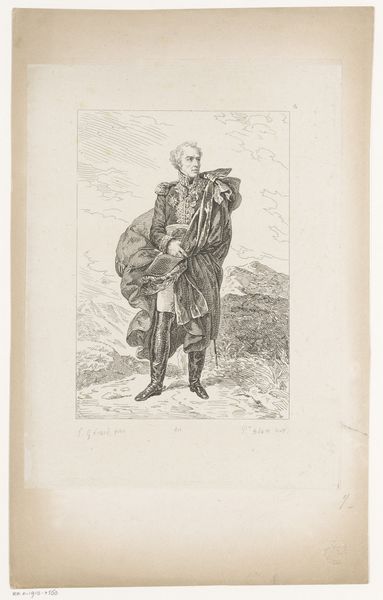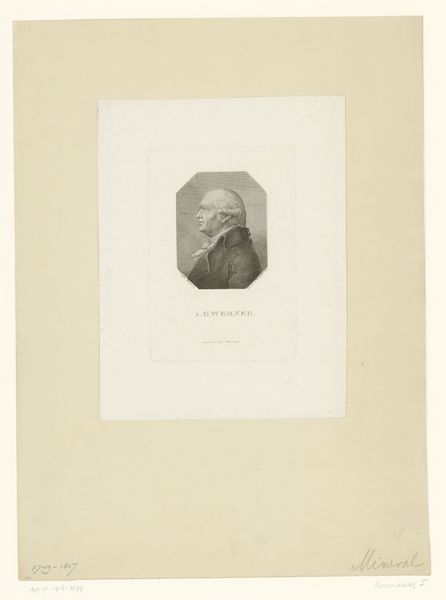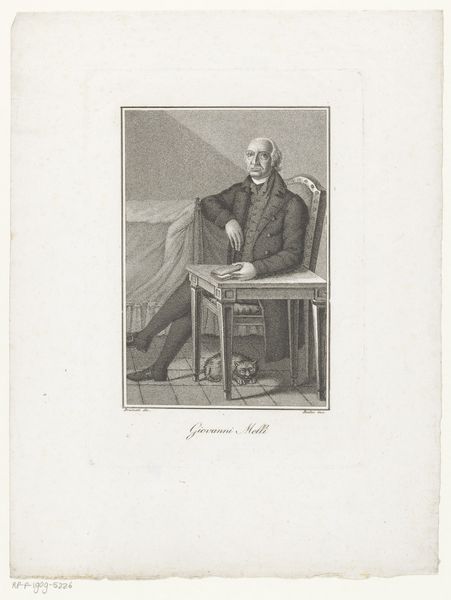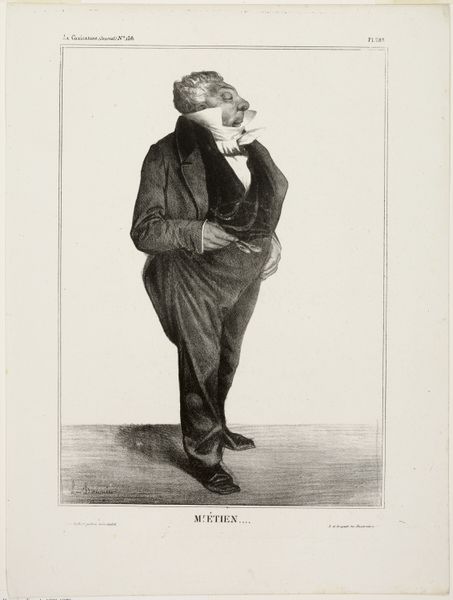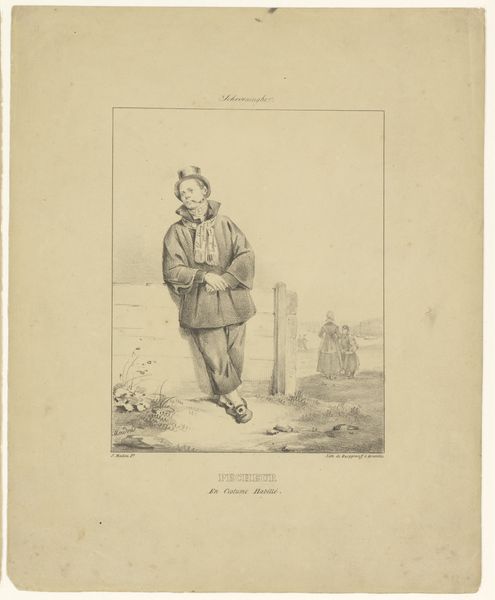
drawing, print, ink, engraving
#
portrait
#
pencil drawn
#
drawing
#
neoclacissism
# print
#
pencil sketch
#
old engraving style
#
archive photography
#
historical photography
#
ink
#
engraving
Dimensions: height 421 mm, width 285 mm
Copyright: Rijks Museum: Open Domain
Curator: Let’s turn our attention to a portrait print housed here at the Rijksmuseum. This engraving, made around 1826 by Jean-Baptiste Madou, depicts the renowned painter Jacques-Louis David. Editor: Oh, the man looks… tired, doesn't he? Sort of slumped. There's this delicate, almost haunted, quality about the sketch that resonates deeply. I mean, those lines forming his coat practically whisper stories of Neoclassical ideals meeting harsher realities. Curator: Exactly. Consider Madou’s technical process. As a print, this image allows for reproduction, circulation and the establishment of a broader visual culture. Engraving allows fine detail to be achieved relatively efficiently—and it served the purposes of both documentation and promotion of influential figures. We see the subtle tonal variations achieved with layered strokes, creating both depth and texture to simulate the fabrics. Editor: Right. And the clothing itself is revealing. It looks rather formal but there’s a weariness there. The way he clutches his hat and cane… There’s a narrative hinted at—like he’s carrying the weight of history, both his and the movement’s, within the very fibers of his being. What strikes me is how this rendering democratizes the master, transforming a monumental figure into a tangible human presence for the masses. Curator: Interesting. Madou had to interpret David for a print audience. By rendering a portrait that’s a bit softened by the medium, by making it approachable in its lines, this engraving offered broader access to Neoclassical aesthetics, shifting art's position in public discourse and its relation to commerce. Editor: Well said. What’s wonderful is the texture brought to life by the engraver's tools. To hold the engraving is like holding the ghost of David, isn’t it? One feels oddly more familiar with David because of Madou’s labor. Curator: That tactile and artistic labor democratized access to likeness at the time in really important ways. These details help contextualize the socio-political function of prints at the dawn of mass visual communication. Editor: So much more poignant than just another formal portrait. Curator: I agree. It brings art history to life.
Comments
No comments
Be the first to comment and join the conversation on the ultimate creative platform.
